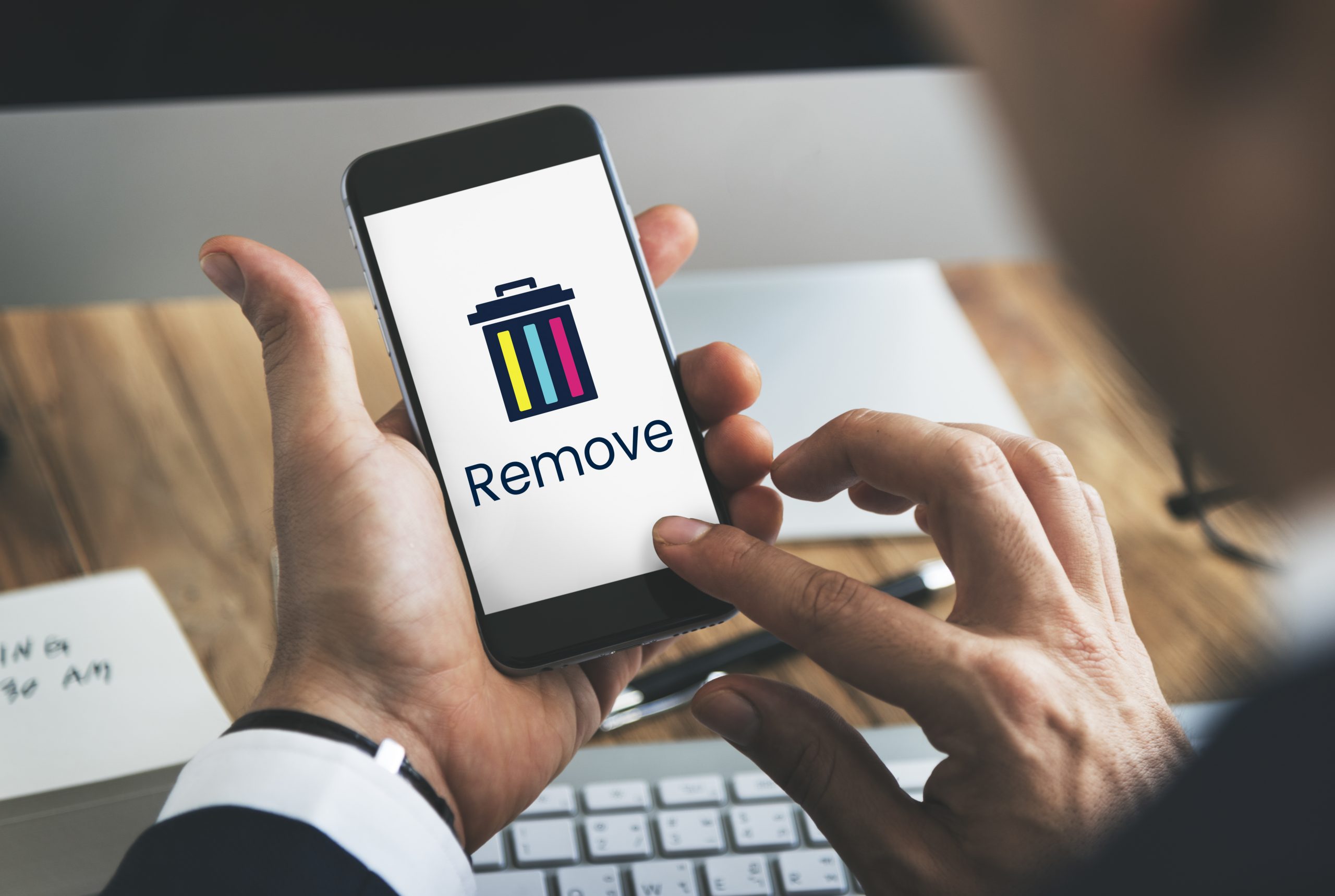
Nowadays, there are smartphone applications for everything. Talk of social networking, ordering groceries and pizza, mobile banking, or even matching dates; you can get any service from the comfort of your smartphone in seconds. According to Bank My Cell, there are 8.93 million+ apps in all official stores globally today, with 225 billion app downloads in 2023.
Are all apps safe to download? No. Some apps you download automatically may take more of your data than necessary. Thus, while permissions are fundamental for an app’s operation, sometimes, they can compromise your device’s performance if not scrutinized. Here’s everything you need to know about staying safe when downloading smartphone apps.
Official app stores like Google Play Store and Apple App Store have filters to kick out suspicious apps, but they may miss out on some. For instance, in April 2023, 38 Minecraft clones with the HiddenAds adware were detected in the Google Play Store, attracting 35 million downloads. This led to low device performance and battery life. Nonetheless, this is one example of the many Android malware cases clocking up over 600 million downloads in 2023 alone.
Thus, to avoid getting caught up in such situations, you must review whether an app is safe for downloading by taking a few precautionary steps. Here are seven practical ways to stay safe when downloading smartphone apps.
1. Use official app stores
Downloading apps from official app stores like the Apple App Store, Google Play Store, Amazon App Store, and Samsung Galaxy Store is one of the practical ways to stay safe when downloading smartphone apps. Google Play Store had 3,387,729 apps as of 28th of March 2024, while Apple App Store had 1,890,112 apps. The Amazon App Store hosted 293,000 apps.
You can get almost any app on the official app stores. In addition, these platforms apply additional measures to secure the network and a proper application review system to block malicious applications to ensure safety.
Unlike the official app stores, third-party stores and websites sometimes lack systematic security features, ultimately making them homes of malicious apps and cybercriminals. Some even develop sites to steer users onto their malware via app downloads. Although no system is flawless, official stores generally have dedicated staff who screen for and quickly remove malicious applications.
Besides, you have extra security features here. For example, Google Play Protect is a system that scans the device and app for harmful behaviors. Furthermore, Apple’s App Store app review involves human and automatic analysis of the legitimacy of an app. Nonetheless, a few malicious apps might successfully escape the needle sophistication; therefore, you must be alert.
Experts warn that malicious apps often find their way into the most prominent and reliable app stores. It’s their job to detect and remove these apps, but the periods from launch to the app’s removal can go from several days to a few months or years. Notably, this means they can infect many users’ devices before removing them.
Therefore, while official app stores are the safest sources, you must add other preventive measures to minimize risks when downloading smartphone apps. This takes us to number 2.
2. Read reviews and check download numbers
Users’ app reviews on stores can be a hidden gem to gauge an app’s validity and possible security threats. Foul reviews may reveal data management issues, malicious behavior, or access rights abuse.
Nevertheless, you should also pay attention to fake and paid positive reviews. Some unscrupulous developers use these reviews to misinform the users. Pretentious reviews can be exposed by spotting imperfect copies of the app icon, incorrect spelling in the description, and low-quality images or inappropriate photos.
Besides, notice an app’s download numbers as well. While new or niche apps may have fewer downloads, negligible numbers are a symptom of the immaturity of the community. This means more research has to be done on such apps. By way of illustration, apps like Amazon, Snapchat, or Zoom have millions of downloads, which means greater trust in their safety and reliability.
3. Check app permissions
Many apps ask permission to interact with different facilities and information on the gadget, like your contacts, location, camera, and microphone. Even though some permissions are crucial to the app functionality, others could be suspicious and provoke privacy-related issues.
Always carefully review each request before granting permission to deny access to vital areas irrelevant to the app’s mission. As another example, a destructive app can abuse the privilege of entering your:
- Contacts
- Location
- Camera and microphone
- SMS and call log
- Bluetooth or Wifi
- Physical activity like total steps count
- Body sensors, and
- Calendar
However, this violates your privacy, under which the hackers could extract sensitive data for use in an array of indecent activities ranging from installation of malware to identity theft.
Therefore, do not consent to suspicious permissions; if possible, do not install that app.
4. Verify app publishers and sources
Before casting your vote for an app, seek the identity of its publisher or developer to ascertain if it’s from a legitimate company rather than a doubler or copycat looking to infect your machine with malware. Go to the app’s official site and read up about the app and who its creator is to make sure of its legitimacy.
Having apps from trusted sources such as the Apple App Store, Google Play Store, and other well-accredited app repositories is less susceptible to downloading malware apples because of their rigorous screening procedure. Even so, the only continued precaution is to research the app very well to confirm it’s real. Sometimes, malware smartphone apps pass through the stores’ vetting processes initially.
5. Keep devices and apps updated
Keeping your device’s OS up-to-date and installing software updates for any apps you have installed are a must to protect your security. Software updates often have security patches that fix security holes that malware could use.
Devices should have the latest security features, which allow automatic updates of operating systems and applications. With this, you will no longer have to go through the manual process of checking for updates or run the risk of overlooking any security patches. Thus, maintaining the up-to-date status of your devices and apps is another crucial security strategy that may lower the chances of your system’s infected with malware code targeting recognized system weaknesses.
6. Use antivirus/security apps
While installing a smartphone app, you must take extra steps to safeguard your devices and personal data. For instance, you use a solicited antivirus or security app. An antivirus or security app prevents malware, exploits, and other threats, which enhances your data and device’s protection.
Moreover, antivirus or security apps assist in keeping your privacy and personal data accessible from any threats, including being tracked. However, if you use an Android device and you suspect your phone is being tracked or monitored, you can look for signs like increased data usage, random phone idle activity, and a fast battery drain. Thus, you should use an anti-spy app to avoid being tracked or monitored. Plus, your chosen app should not jailbreak or root your phone and always keeps the operating system up to date.
7. Be cautious of free apps
It can be tempting to just go for the free apps, but you shouldn’t be complacent. Since most mobile applications operated using the free model collect lots of personal data exhaust for revenues or are overloaded with intrusive ads, there is the likelihood of compromise of user privacy.
On the other hand, to get great smartphone apps, you should go for the paid or premium versions whenever they are offered. They’re practically the same; only premium apps have privacy concerns, and they do not have any ads. If you use free apps, check what data they collect and limit their access to your personal information by setting up your privacy settings accordingly.
Final Thoughts
Smartphone app downloads have become part and parcel of our everyday lives, but you must always take caution and follow the best practices to ensure your device’s security and privacy are not breached. Some ways to stay safe when downloading smartphone apps include using official app stores, reading reviews and checking download numbers, closely examining the app permissions, and verifying the app publishers & sources. In addition, keep your devices and apps updated, use antivirus or security apps, and carefully approach the free apps that collect more personal data or serve more intrusive ads than you were expecting.
Notwithstanding, you must be watchful of any symptom that means your gadget could have been infected with malware, such as sudden battery drain, lagging performance, and strange behaviors. If you suspect your smartphone is being tracked, perform scanning immediately with a reliable antivirus or security app, or if you need expert help, seek it as well.
Be mindful that most apps are harmless, but that unassuming malicious app knows precisely how to invade your device and destroy your private information. Adhering to these processes and ensuring a good balance of your safety and privacy will let you appreciate the usefulness of such apps.
Raghav is a talented content writer with a passion for creating informative and interesting articles. With a degree in English Literature, Raghav possesses an inquisitive mind and a thirst for learning. Raghav is a fact enthusiast who loves to unearth fascinating facts from a wide range of subjects. He firmly believes that learning is a lifelong journey and he is constantly seeking opportunities to increase his knowledge and discover new facts. So make sure to check out Raghav’s work for a wonderful reading.




